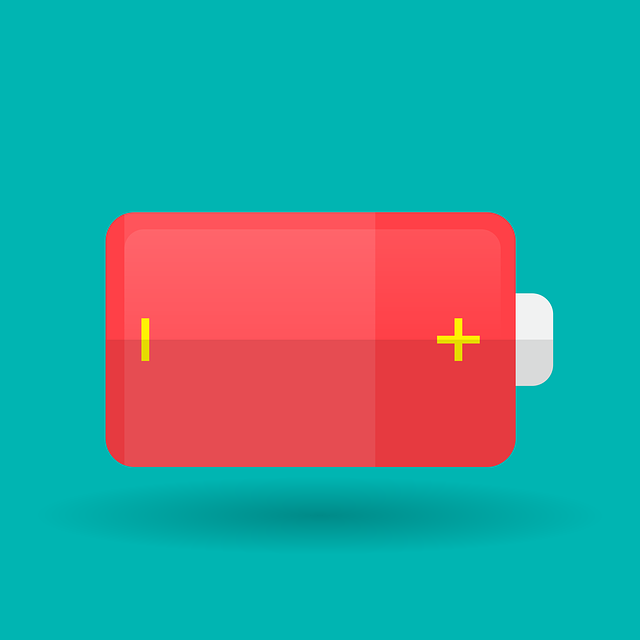When replacing a battery in electronic devices such as smartphones, laptops, or other portable gadgets, it's crucial to identify the correct battery type—lithium-ion, lithium-polymer, nickel-metal hydride (NiMH), or lead-acid—as each has unique characteristics and compatibility issues. Lithium-ion batteries, commonly found in smartphones and laptops for their energy density and lightweight properties, are a top choice for portable devices. Lithium-polymer variants are ideal for gadgets with unique shapes or that require a slimmer design. NiMH batteries are rechargeable but offer less capacity and require longer charging times compared to lithium-ion. Lead-acid batteries excel in stationary applications like UPS systems or electric vehicles due to their durability and energy storage capacity. Safety is paramount when self-replacing a battery: ensure the device is powered off, use appropriate tools, follow manufacturer guidelines, wear protective gear, and work in a well-ventilated area. Proper disposal of old batteries and environmental precautions are also essential. After replacement, calibrate the new battery by charging it according to the manufacturer's instructions and monitor your device for any performance issues. Maintain the health of the battery by practicing safe charging habits, keeping software updated, and considering a protective case that helps dissipate heat. These steps will help ensure optimal battery performance and longevity post-replacement.
7 Tips for Easy DIY Battery Replacement: A Safe Guide to Prolong Your Devices’ Lifespan
Embarking on a DIY battery replacement can seem daunting, but with the right knowledge and precautions, it’s a task accessible to anyone. This article provides a comprehensive overview of the process, ensuring you understand your device’s battery type before replacement. We cover essential safety measures to prevent damage or injury during the procedure. With our step-by-step guide tailored for various common devices, you’ll learn how to replace batteries efficiently and effectively. Additionally, we offer valuable tips for troubleshooting and maintaining your device post-replacement to enhance its longevity and performance. By following these guidelines, you’ll be equipped to handle battery replacements with confidence.
- Understanding Your Device's Battery Type Before Replace Battery
- Safety Precautions to Consider When Replacing a Battery
- Step-by-Step Guide for Safely Replacing Batteries in Common Devices
- Tips for Troubleshooting and Maintaining Your Device After a Battery Replacement
Understanding Your Device's Battery Type Before Replace Battery

When considering a DIY battery replacement for your device, the first and most crucial step is to understand the type of battery your device utilizes. This knowledge is paramount as different devices require different types of batteries, and attempting to use an incompatible battery can cause damage or harm. Common battery types include lithium-ion, lithium-polymer, nickel-metal hydride (NiMH), and lead-acid. Lithium-ion batteries are prevalent in smartphones, laptops, and other portable electronics due to their high energy density and lightweight properties. Lithium-polymer variations are often found in devices with flexible form factors or those requiring a thinner profile. Understanding these distinctions is essential as each type has specific charging requirements and capacities. For instance, NiMH batteries are rechargeable but typically hold less energy than lithium-ion counterparts and have longer charge times. On the other hand, lead-acid batteries, though less common in modern portable devices, are often used in stationary applications like uninterruptible power supplies (UPS) or electric vehicles due to their robust construction and high energy storage capabilities. Knowing your device’s battery type is a prerequisite for a successful replacement; it ensures that you procure the correct battery, have the appropriate charger, and avoid potential safety issues. Always refer to your device’s user manual or manufacturer specifications to accurately identify the required battery type before proceeding with the replacement process.
Safety Precautions to Consider When Replacing a Battery

When embarking on the task of replacing a battery, safety must be your top priority. As you handle devices that store energy, there’s an inherent risk of electrical shocks or short circuits if precautions are not taken. Begin by ensuring you have the correct replacement battery for your device, as using the wrong type can lead to malfunctioning and potential hazards. Always disconnect the power source before starting the replacement process to minimize the risk of electric shock. It’s crucial to use the right tools and follow the manufacturer’s instructions precisely.
Before you proceed with the battery replacement, make sure you have protective equipment such as insulated gloves and safety glasses. A well-ventilated area is advisable due to the potential release of gases during the removal process. Be mindful of proper disposal methods for your old battery to prevent environmental harm or the risk of fire. Lastly, be aware of your device’s components; avoid touching metal parts with wet hands to prevent short-circuiting. By adhering to these safety precautions, you can safely replace your battery and maintain the integrity of your device.
Step-by-Step Guide for Safely Replacing Batteries in Common Devices

When the time comes to replace the battery in your devices, whether it’s a smartwatch, remote control, or a children’s toy, following a step-by-step guide is crucial for both safety and efficiency. Before beginning, ensure you have the correct replacement battery that matches your device’s model specifications. Safety precautions are paramount when dealing with batteries; always disconnect the device from any power source and remove any combustible materials from the vicinity to prevent fire hazards.
To initiate the process, gently open the device’s casing. This often involves unscrewing a few screws or carefully prying apart assembled components. Locate the old battery, which is usually secured with adhesive or clips. Carefully disconnect the battery connector, if present, to cut off any electrical flow. Now you can proceed to remove the old battery and prepare the space for the new one. With the new battery in hand, align it carefully into position, taking care not to bend or damage the terminals. Once in place, reattach any connectors, apply fresh adhesive if necessary, and then proceed to reassemble the device. Ensure each component is securely fastened and that the device’s casing fits properly. After completing these steps, power on your device to test if the replacement battery functions correctly. If everything operates smoothly, you’ve successfully replaced the battery in your device without compromising safety or functionality.
Tips for Troubleshooting and Maintaining Your Device After a Battery Replacement

When replacing the battery in your device, ensuring its longevity and optimal performance involves more than just the swap itself. Regular maintenance and troubleshooting are crucial for preserving the integrity of your device post-replacement. To start, always refer to the manufacturer’s guidelines for specific instructions tailored to your device model. Monitor your device’s behavior closely after the replacement; this will help you identify any immediate issues that may arise from the new battery installation. Pay close attention to the charging patterns and cycle the battery a few times as recommended by the manufacturer to calibrate it. Should you encounter problems such as inconsistent power levels or difficulty in holding a charge, check the connections first; loose or corroded terminals can significantly impact battery performance.
For long-term maintenance, avoid overcharging by unplugging your device once it’s fully charged, and ensure that your charging equipment is in good condition to prevent any undue stress on the new battery. Keep your device within a suitable temperature range, as extreme temperatures can degrade battery life. Regular software updates can also improve battery efficiency, so stay current with these updates. Lastly, consider using a protective case designed to dissipate heat and safeguard against physical damage. By following these tips for troubleshooting and maintaining your device after a battery replacement, you can enhance the lifespan of your new battery and maintain the overall performance of your device.
7 Tips for Easy DIY Battery Replacement can empower you to extend the life of your devices without the need for professional assistance. By carefully understanding your device’s battery type, adhering to essential safety precautions, and following a detailed guide for replacing batteries in common gadgets, you can confidently perform this task. Additionally, the article offers valuable tips for troubleshooting and maintaining your device post-replacement to ensure optimal performance. Remember, with the right knowledge and tools, replacing a battery is a manageable project for tech enthusiasts and everyday users alike. Always prioritize safety and proper technique when embarking on a DIY battery replacement to safeguard both your gadgets and your well-being.
